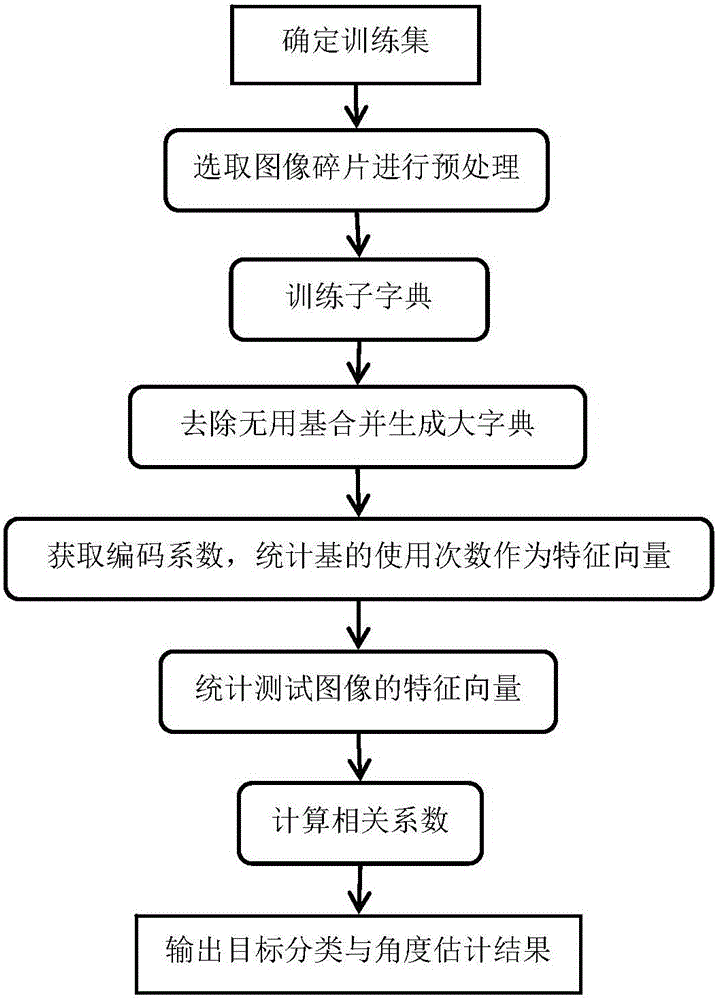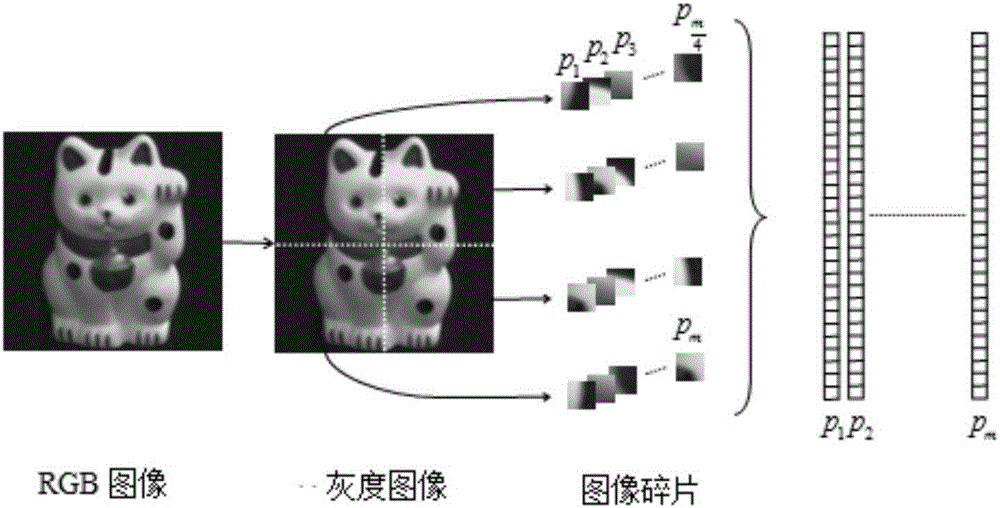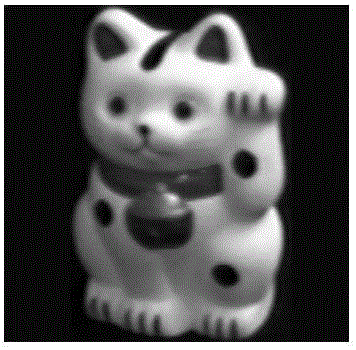Target recognition and angle coarse estimation algorithm using space sparse coding
A sparse coding and target recognition technology, applied in the field of digital image processing, can solve problems such as limiting the flexibility and harshness of problem solving, and achieve the effect of increasing the space selection method.
- Summary
- Abstract
- Description
- Claims
- Application Information
AI Technical Summary
Problems solved by technology
Method used
Image
Examples
Embodiment Construction
[0053] The present invention will be further described in detail below in conjunction with the accompanying drawings and specific embodiments.
[0054] The present invention aims to learn the features of the target in a sparse coding manner, further classify and recognize the target, and at the same time roughly estimate the target angle corresponding to the image. The algorithm first takes images of equally spaced angles (15°) of different targets as the training set, obtains and screens the spatial fragments of each image according to the standard deviation; then performs whitening and PCA on the fragments in each independent image. Preprocessing; then use the spatial fragmentation to separately train the dictionary (sub-dictionary) of each target; after removing the useless bases in each sub-dictionary, merge the sub-dictionaries into a large dictionary as a whole, and use this large dictionary to regain the image fragments of the training set Sparsely encode the coefficien...
PUM
 Login to View More
Login to View More Abstract
Description
Claims
Application Information
 Login to View More
Login to View More - Generate Ideas
- Intellectual Property
- Life Sciences
- Materials
- Tech Scout
- Unparalleled Data Quality
- Higher Quality Content
- 60% Fewer Hallucinations
Browse by: Latest US Patents, China's latest patents, Technical Efficacy Thesaurus, Application Domain, Technology Topic, Popular Technical Reports.
© 2025 PatSnap. All rights reserved.Legal|Privacy policy|Modern Slavery Act Transparency Statement|Sitemap|About US| Contact US: help@patsnap.com



